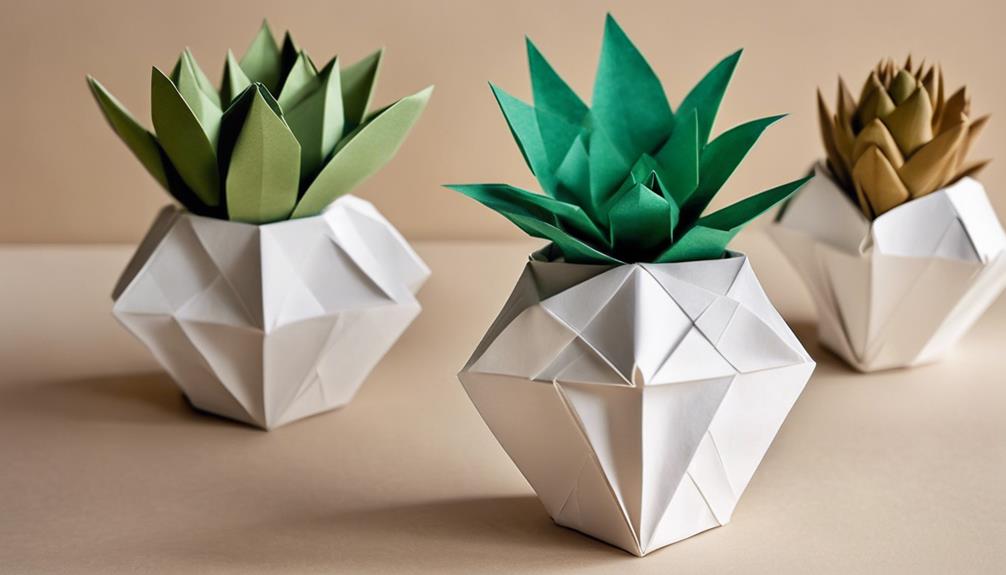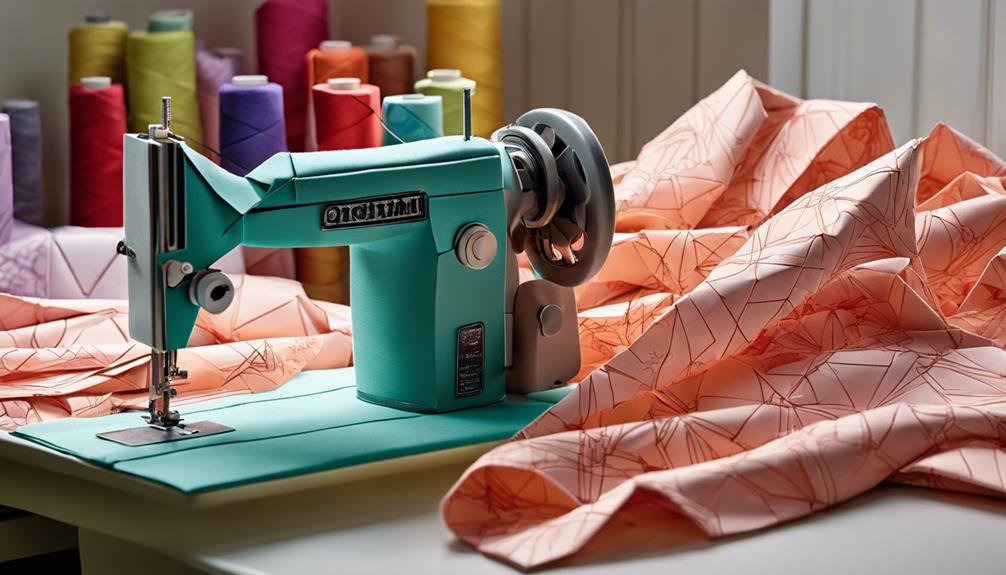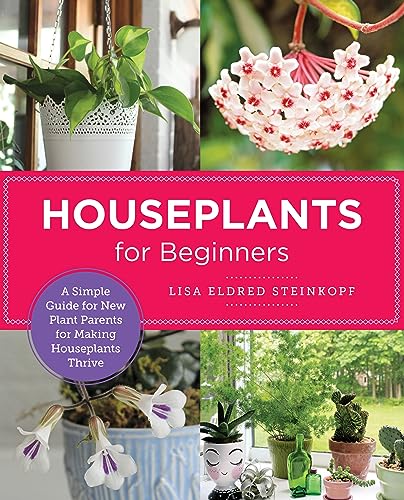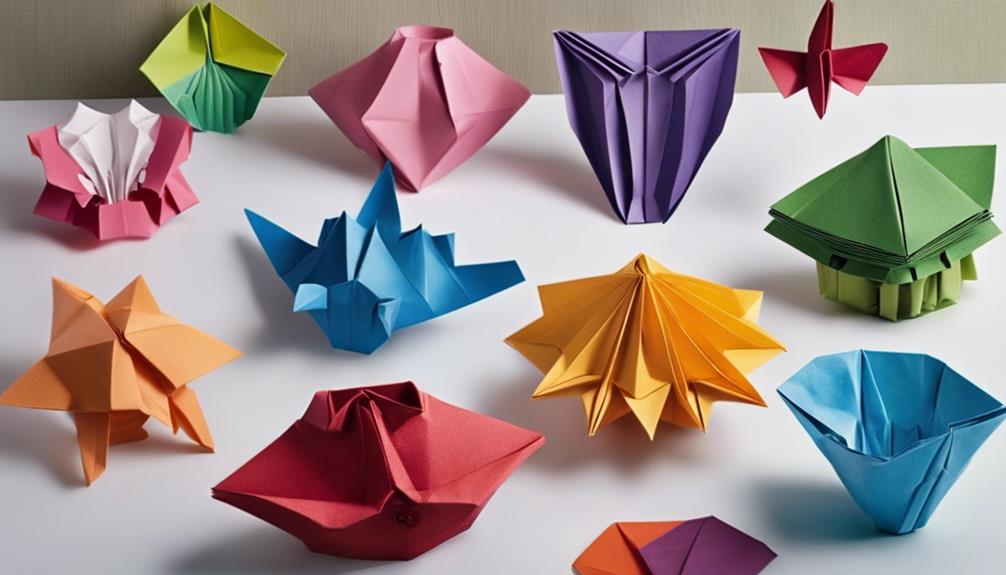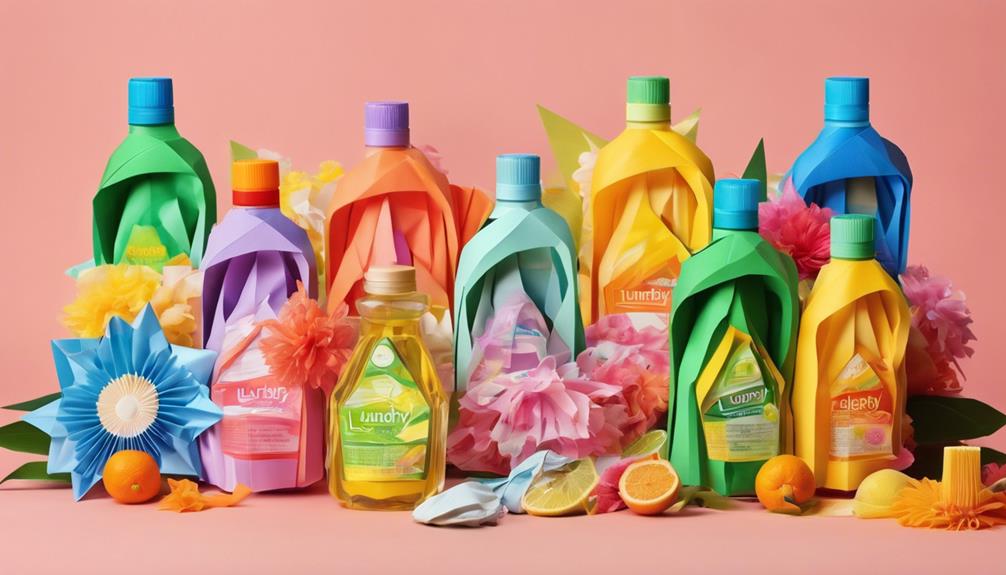As a beginner starting an indoor garden, choosing the right plants is key for success. Opt for low-maintenance options like pothos, snake plants, spider plants, and peace lilies. These plants have moderate watering needs and clear care instructions. Additionally, succulents and cacti are resilient choices that thrive in various light conditions with minimal watering requirements. Match plants with appropriate light levels; pothos, snake plants, and spider plants suit low light, while succulents and aloe vera prefer bright sunlight. For medium to bright, indirect light, consider peace lilies, philodendrons, and ZZ plants. The perfect plant can make your indoor garden thrive.
Key Takeaways
- Choose low-maintenance plants like pothos and snake plants.
- Consider light conditions; pothos and spider plants for low light.
- Opt for succulents or cacti for minimal watering needs.
- Group plants with similar care requirements for easier maintenance.
- Use hanging planters or shelves for space-efficient indoor gardens.
Essential Houseplant Collection (4PK) Live Plants Indoor Plants
For beginners looking to kickstart their indoor garden, the Essential Houseplant Collection (4PK) Live Plants Indoor Plants is the perfect choice due to its low-maintenance nature and tolerance for low light conditions. This collection includes four hand-selected plants in 4-inch plastic planters, ranging in height from 7 to 10.5 inches.
These plants, which can grow even larger, are ideal for indoor usage. The variety of plants in this collection, including Rubber plant, Pothos, Philodendron, Dieffenbachia, Calathea, Ivy, Croton, and Dracaena, offer a diverse selection for your indoor space.
With moderate watering needs and partial sun exposure requirements, these plants are easy to care for. The positive feedback on plant quality and packaging makes this collection a reliable choice for beginners like me starting their indoor gardening journey.
Best For: Beginners looking to start their indoor garden with low-maintenance, low-light tolerant plants.
Pros:
- Diverse selection of popular houseplants included in the collection.
- Plants are low-maintenance and suitable for indoor environments.
- Positive feedback on plant quality, packaging, and shipping.
Cons:
- Some reported issues with plant identification and soil quality.
- Plants may be toxic to pets, requiring caution for pet owners.
- Limited information on specific care instructions for each plant included.
The Houseplants Book for Beginners
The Houseplants Book for Beginners by Christo Sullivan presents essential care tips and recommendations tailored for individuals new to indoor gardening. The book covers a range of topics such as watering, soil types, fertilizers, zones, temperatures, and sunlight requirements for various houseplants. With pictures to aid in plant identification, readers can easily navigate through the information provided.
Christo Sullivan, drawing from 17 years of experience, recommends 34 houseplants and five super low-maintenance succulents ideal for indoor growing. The detailed step-by-step guide for repotting plants is particularly useful for beginners with limited knowledge of houseplants.
While some readers find the book valuable for starting an indoor plant collection, others critique the lack of colored photos and the organization of the content.
Best For: Beginners looking to start an indoor plant collection with limited knowledge of houseplants.
Pros:
- Detailed step-by-step guide for repotting plants
- Recommendations for 34 houseplants and five super low-maintenance succulents
- Comprehensive information on watering, soil, fertilizers, zones, temperatures, and sunlight requirements
Cons:
- Lack of colored photos might be disappointing for some readers
- Content organization could be improved for better navigation
- Some readers may find the book lacking in advanced care techniques
Air Plants Tillandsia Collection for Beginners (Set of 5)
Ideal for those seeking low-maintenance greenery, this Air Plants Tillandsia Collection for Beginners offers a hassle-free indoor gardening experience.
This set includes 5 assorted air plants that have been raised outdoors in southern California, ensuring their health and robustness.
These plants are easy to care for, requiring minimal attention while being safe for pets and children. Customers have praised the resilient nature of these plants, mentioning that they're easy to water and maintain.
While some reviews mentioned minor issues like plants arriving with a white, powdery substance or being smaller than expected, overall, the feedback has been positive.
With quick shipping and good condition upon arrival, this collection is a great starting point for beginners looking to add some decorative greenery to their indoor space.
Best For: Plant lovers seeking low-maintenance indoor greenery that is safe for pets and children.
Pros:
- Easy to care for, requiring minimal attention.
- Raised outdoors in southern California for health and robustness.
- Great decorative piece for indoor spaces.
Cons:
- Some plants may arrive with a white, powdery substance.
- Occasional issues with size discrepancies.
- Possibility of plants not surviving long-term in certain conditions.
Native Plant Gardening for Beginners
A thorough guide on native plant gardening for beginners emphasizes the importance of planting species that benefit the local ecosystem. Native plant gardening involves selecting and cultivating plants that naturally occur in your region. These plants have adapted to the local climate, soil conditions, and wildlife, making them resilient and beneficial for the environment.
By choosing native species, beginners can create a sustainable garden that supports local pollinators, birds, and other wildlife. Additionally, native plants often require less water and maintenance compared to non-native species, making them an excellent choice for those new to gardening.
With step-by-step instructions and practical tips, beginners can successfully start their native plant garden and contribute positively to their community's ecosystem.
Best For: Beginners looking to create a sustainable garden that supports local wildlife and requires minimal maintenance.
Pros:
- Emphasizes the importance of planting native species for the local ecosystem.
- Provides practical step-by-step instructions for selecting, planting, and maintaining native plants.
- Offers resources and tools, such as apps and downloadable forms, to assist beginners in native plant gardening.
Cons:
- Some minor inaccuracies noted by a few readers.
- May not provide in-depth information for experienced gardeners.
- Limited focus on specific regional considerations for native plant gardening.
High-Protein Plant-Based Diet for Beginners
For beginners looking to kickstart their journey into plant-based eating with a focus on high-protein options, the cookbook 'Plants for Beginners to Start Their Indoor Garden' offers a valuable resource filled with practical advice and delicious recipes. The positive reviews highlight the cookbook's generous content, including menus, shopping lists, and food prep tips. Readers appreciate the unique and flavorful recipes that stand out from other cookbooks.
The author's expertise in health and wellness makes the book a valuable resource for plant-based eating. Recommendations suggest the cookbook for friends interested in increasing their protein intake. While some critics mention concerns about hunger and repetitive dishes, the book is still seen as a gentle and realistic approach to healthy living.
Overall, the cookbook provides a visually appealing layout, informative content, and easy-to-follow recipes, making it a useful tool for plant-based beginners.
Best For: Beginners interested in plant-based eating seeking a valuable resource with practical advice and high-protein recipes.
Pros:
- Generous content including menus, shopping lists, and food prep tips.
- Unique and flavorful recipes that stand out from other cookbooks.
- Author's expertise in health and wellness enhancing the value of the resource.
Cons:
- Some concerns about hunger and repetitive dishes in the meal plan.
- Unclear reflection of suitability for non-beginners in plant-based eating.
- Desire for more images to accompany the recipes expressed by some readers.
House Plants for Beginners: A Beginner's Guide to Indoor Plants and Plant Decor
The beginner's guide to indoor plants and plant decor in 'Plants for Beginners to Start Their Indoor Garden' serves as a valuable resource for individuals venturing into the world of plant parenting. This guide offers quick references and solid advice on gardening, emphasizing lighting considerations.
While some readers find the content simplified, it covers essential topics like plant placement, decoration, watering, and light requirements. One reader questions the use of ice cubes for watering orchids. Plant selection stories include purchasing a monstera deliciosa and snake plant, with hopes of proper care guided by the book.
Overall, the book is praised as an excellent start for plant novices, providing a good overview to kickstart their journey as plant parents. Reader satisfaction varies, with feedback ranging from positive recommendations to mixed reviews on content and quality.
Best For: Beginners looking for a quick reference and solid advice on indoor plant care and decoration.
Pros:
- Provides essential gardening advice and lighting considerations.
- Offers ideas on plant placement, decoration, watering, and light requirements.
- Serves as a good overview for those starting their journey as plant parents.
Cons:
- Some readers find the content overly simplified.
- Mention of pixelated images in the book.
- A questionable suggestion of using ice cubes for watering orchids.
Grow Your Own Bonsai Tree kit for Plant Lovers
Ideal for plant lovers of all ages, the Grow Your Own Bonsai Tree kit from the 'Plants for Beginners to Start Their Indoor Garden' collection makes cultivating a miniature masterpiece a rewarding and enjoyable experience. This kit includes all the necessary items for beginners, masters, and even children to start their bonsai journey.
The premium Bonsai pot adds a touch of elegance to your growing space. While some users have experienced challenges with seed growth, the high germination rates have been verified to guarantee successful growth stories. Customers have provided positive feedback on the detailed kit, with some suggestions for improvement.
This unique gift idea for plant lovers offers a fun way to engage with nature indoors. With proper care, attention, and following instructions, growing your Bonsai tree can be a gratifying experience.
Best For: Plant lovers of all ages seeking a rewarding and enjoyable indoor gardening experience.
Pros:
- Comprehensive kit suitable for beginners, masters, and children.
- Premium Bonsai pot included for an elegant touch.
- High germination rates tested for successful growth stories.
Cons:
- Mixed experiences with seed growth reported.
- Some users faced challenges with damaged packaging.
- Lack of instructions in some cases led to disappointment in seed sprouting results.
ETSPIL Embroidery Kit for Beginners, Plant Kits for Adults (Flower D4)
With its extensive kit and user-friendly features, the ETSPIL Embroidery Kit for Beginners is a great choice for adults looking to explore the world of indoor gardening.
This kit, designed for adults and suitable for beginners, comes in the beautiful Flower D4 color. The kit includes 4 printed fabrics, 4 dental flosses, 4 instructions, 16 needles, a Bamboo embroidery hoop, a Needle threader, and a Seam ripper.
It introduces 33 stitching techniques through detailed English instructions and video guidance, making it easy to learn and enjoy. Customers have praised its ease of use, quality materials, and the variety of stitches and patterns available.
This all-encompassing kit can also be a thoughtful gift for various occasions.
Best For: Beginners and adults who are interested in exploring embroidery and learning various stitching techniques in a user-friendly manner.
Pros:
- Comprehensive kit with 33 stitching techniques and detailed instructions.
- Quality materials and ease of use make it suitable for beginners.
- Can be a meaningful gift for various occasions.
Cons:
- May not be suitable for experienced embroiderers looking for more advanced techniques.
- Limited color options available in the Flower D4 kit.
- Some users may find the kit slightly pricey compared to other beginner embroidery kits.
How to Houseplant: A Beginner's Guide to Making and Keeping Plant Friends
For beginners looking to cultivate their indoor garden, 'Plants for Beginners to Start Their Indoor Garden' serves as an invaluable resource for mastering the art of houseplant care. This beginner's guide covers essential aspects of plant care, such as light, water, soil, pests, and diseases, in a detailed and thorough manner.
The book's well-organized structure makes it easy to reference, while the beautiful images included aid in plant identification and serve as inspiration. Recommended for those new to houseplants or seeking to enhance their plant care skills, this guide offers specific care instructions tailored to different plant varieties.
Readers appreciate the book's clear writing style, attractive illustrations, and its ability to simplify intricate plant care concepts. Overall, it's a valuable companion for understanding plant care basics and addressing common plant issues.
Best For: Beginners looking to cultivate their indoor garden with a comprehensive and easy-to-follow guide on houseplant care.
Pros:
- Well-organized and easy to reference structure.
- Practical and comprehensive information covering various aspects of plant care.
- Beautiful images included for plant identification and inspiration.
Cons:
- Some readers may have personal preferences regarding the photographs.
- Limited focus on advanced plant care techniques.
- May not provide in-depth guidance for experienced plant enthusiasts.
Essential Succulents: The Beginners Guide
'Essential Succulents: The Beginners Guide' stands out as a thorough resource tailored to those looking to start their indoor garden journey with easy-to-follow care instructions and identification tips for various succulents. The book's well-organized layout and large, identifiable photos make it a hit among beginners and experienced succulent enthusiasts alike.
It covers everything from detailed descriptions of succulents to care instructions, propagation techniques, and even crafting ideas. While some readers wished for an alphabetical index for easier identification, many appreciated the practical advice on succulent care. The book also helps diagnose common issues like overwatering and boosts confidence in propagating succulents.
With its informative content, beautiful illustrations, and user-friendly format, 'Essential Succulents: The Beginners Guide' is a valuable tool for anyone looking to explore the world of succulent gardening.
Best For: Beginners and experienced succulent enthusiasts seeking a well-organized guide with detailed care instructions and identification tips for various succulents.
Pros:
- Well-organized layout with easy-to-follow care instructions.
- Large, identifiable photos of various succulents.
- Thorough descriptions, propagation techniques, and crafting ideas provided.
Cons:
- Lack of alphabetical pages for easier succulent identification.
- Limited information on succulents compared to other resources.
- Some readers may desire more in-depth content on specific succulent types.
The Complete Gardeners Guide: Plan, Sow, Plant, and Grow Your Garden
Beginners and experienced gardeners alike find 'Plants for Beginners to Start Their Indoor Garden' to be a thorough resource for nurturing thriving indoor gardens.
One standout section in the book is 'The Complete Gardeners Guide: Plan, Sow, Plant, and Grow Your Garden'. It's praised for its detailed information and practical solutions to common gardening problems. This guide is highly recommended for serious gardeners who are looking to expand their knowledge and skills.
It covers essential aspects such as planning, sowing, planting, pruning, and more. Additionally, it offers valuable guidance for those interested in growing their own fruits and vegetables.
With beautiful photography and a well-organized layout, this book serves as a comprehensive tool for both beginners and seasoned gardeners seeking to create and maintain stunning gardens.
Best For: Beginners and experienced gardeners looking for a comprehensive guide to plan, sow, plant, and grow their gardens successfully.
Pros:
- Loved by beginners and experienced gardeners alike.
- Contains detailed information and solutions for gardening problems.
- Great for first-time gardeners looking to learn and maintain beautiful gardens.
Cons:
- May be overwhelming for those seeking very basic gardening information.
- Some readers might prefer more focus on specific types of plants or gardens.
- Could benefit from more interactive elements for practical application.
Pocket Guide to Houseplants: Over 240 Easy-Care Favorites
With over 240 easy-care houseplant favorites, this pocket guide is a must-have for anyone looking to kickstart their indoor garden journey. Packed with detailed information, including scientific and common names, this compact 5 x 7 guide offers over 300 photos and illustrations to help you identify and care for your plants.
From light and soil requirements to watering, feeding, and propagation tips, this book covers it all. Users have praised the book for its excellent pictures and informative content, making it a valuable resource for both new and experienced plant enthusiasts.
Whether you're looking for decoration ideas or plant care information, this pocket guide has you covered. Don't miss out on this handy companion for your indoor gardening adventures.
Best For: Those new to houseplant care and enthusiasts looking for a comprehensive guide to over 240 easy-care favorites.
Pros:
- Compact size for easy portability
- Detailed information on plant care requirements
- Excellent pictures and illustrations for plant identification
Cons:
- Lack of information on plants toxic to pets
- Limited coverage on advanced plant care techniques
- May not include all possible houseplant varieties
Houseplants for Beginners: A Simple Guide for New Plant Parents
For those venturing into indoor gardening, this guide on houseplants provides a thorough and detailed starting point. The book offers valuable information on selecting and caring for houseplants, covering essential aspects such as repotting, watering, fertilizing, trimming, propagating, light preferences, problem-solving, and pest management.
Readers appreciate the practical advice and plant profiles rated by ease of growing. The book's user-friendly format, with clear sections and helpful photos for plant identification, makes it easy to navigate. It emphasizes the importance of choosing plants based on ease of care to guarantee successful growth.
Whether you're a novice or experienced plant parent, this guide offers a wealth of knowledge to help you cultivate healthy and thriving indoor plants.
Best For: Those new to indoor gardening seeking a comprehensive guide on selecting and caring for houseplants.
Pros:
- Detailed information on various aspects of plant care.
- User-friendly format with clear sections and helpful photos.
- Emphasis on choosing plants based on ease of care for successful growth.
Cons:
- May lack in-depth information on rare or specialized plant varieties.
- Some readers may prefer more detailed troubleshooting solutions for plant problems.
- Limited focus on advanced plant care techniques for experienced growers.
Raised-Bed Gardening for Beginners
Raised-Bed Gardening, detailed in the book 'Raised-Bed Gardening for Beginners' by Tammy Wylie, offers an all-encompassing guide suitable for those seeking to start their indoor garden journey with practical and visually informative assistance.
Raised-bed gardening involves planting in beds elevated above the ground, making it easier to control soil quality, drainage, and weed prevention. This method allows for better water retention and aeration, promoting healthier plant growth.
The book emphasizes the importance of planning before planting, provides a plant compatibility chart for beginners, detailed plant profiles, and information on USDA plant hardiness zones.
With positive feedback from readers praising its helpfulness for beginners, the book is recommended for those interested in gardening, particularly visual learners looking to boost their confidence in starting a garden project.
Best For: Beginners interested in gardening who prefer a visually informative and comprehensive guide to starting and sustaining a thriving garden.
Pros:
- Detailed plant compatibility chart for beginners.
- Informative plant profiles with in-depth information.
- Emphasis on planning and soil quality considerations.
Cons:
- Limited focus on advanced gardening techniques.
- Lack of in-depth information on pest control strategies.
- Relatively short length of 120 pages may leave some readers wanting more detailed content.
Beginners Guide to Aquaponics: Step-by-Step Systems for Plants and Fish
The 'Beginners Guide to Aquaponics: Step-by-Step Systems for Plants and Fish' is an essential resource for individuals looking to explore sustainable gardening practices combining plant cultivation and fish maintenance.
This guide provides an in-depth overview of different types of aquaponics systems, suitable plants, and valuable advice for beginners venturing into this eco-friendly gardening method. Users have praised the book for its beginner-friendly approach, informative content, and practical illustrations.
It discusses the concept of aquaponics as a holistic system involving both plants and fish, emphasizing its potential applications beyond just plant cultivation, such as using it for aquarium filtration or raising pet fish.
Personal experiences shared in the book offer insights into how readers have benefited from understanding aquaponics systems. Despite some users realizing aquaponics wasn't for them, the guide remains a helpful tool in making informed decisions about adopting this sustainable gardening technique.
Best For: Individuals seeking a comprehensive and beginner-friendly guide to starting and understanding aquaponics systems.
Pros:
- Detailed overview of various aquaponic systems.
- Practical advice and suitable plant suggestions.
- Clear explanations and user-friendly illustrations.
Cons:
- Some users may desire more detailed instructions on system building.
- Limited focus on advanced aquaponic techniques.
- Not suitable for readers seeking in-depth scientific analysis of aquaponics.
Factors to Consider When Choosing Plants for Beginners

When selecting plants for your indoor garden as a beginner, it's crucial to take into account factors like:
- Plant selection tips
- Beginner-friendly varieties
- Easy care plants
Understanding suitable light conditions and watering guidelines for your chosen plants can help guarantee their health and growth. By taking these factors into consideration, you can set yourself up for a successful and enjoyable indoor gardening experience.
Plant Selection Tips
Considering various factors when choosing plants is crucial for beginners looking to start their indoor garden successfully.
First, assess the light conditions in your space to match plants with the available sunlight. Opt for low-light plants like pothos or peace lilies for dim areas, while sun-loving plants such as succulents thrive in bright spots.
Select low-maintenance plants like snake plants or ZZ plants that require minimal care, making them perfect for those new to gardening. If you have pets, check for plant toxicity to guarantee your furry friends stay safe.
Additionally, choose plants known for their air-purifying qualities like spider plants or aloe vera to improve indoor air quality. Starting with a variety of plant types allows beginners to experience different growth habits and care requirements, providing a well-rounded learning experience.
Beginner-Friendly Varieties
For beginners starting their indoor garden, selecting beginner-friendly plant varieties is essential for success. When choosing plants, focus on low-maintenance options that can tolerate different light conditions. Consider popular varieties like pothos, snake plants, spider plants, and peace lilies known for their resilience and ease of care.
Opt for plants that require moderate watering and can thrive indoors with minimal attention, such as succulents, ZZ plants, and philodendrons. These plants are excellent choices for beginners due to their adaptability and forgiving nature.
It's also helpful to select plants with clear care instructions and simple requirements. This won't only make it easier for beginners to care for their plants but also help them build confidence in their gardening skills.
Easy Care Plants
Beginner-friendly indoor plants, known for their easy care requirements, are excellent choices for those new to gardening. These plants are low-maintenance, perfect for individuals looking to start their indoor garden without the stress of complicated care routines. Easy care plants are resilient and adaptable, thriving in various light conditions, including low light environments, making them versatile for different spaces in your home.
Common easy care plants such as pothos, snake plants, spider plants, and peace lilies are popular among beginners due to their simple care needs and ability to withstand occasional neglect. Succulents and cacti are also great options for those starting out, as they're drought-tolerant and require minimal watering.
Suitable Light Conditions
Understanding the light conditions in your home is vital when selecting plants for beginners to guarantee their growth and maintenance are successful. Different plants have varying light requirements, so it's important to match them with the available light in your space.
For low light areas, consider plants like pothos, snake plants, and spider plants that thrive in such conditions. If you have bright, direct sunlight spots, opt for plants like succulents, cacti, and aloe vera that love soaking up the sun. In medium to bright, indirect light areas, plants such as peace lilies, philodendrons, and ZZ plants flourish.
Watering Guidelines
Taking into account factors like plant type, soil composition, and environmental conditions is vital when determining the appropriate watering guidelines for beginner indoor gardeners. Overwatering can lead to root rot, while underwatering can cause wilting and stunted growth in plants.
Factors such as plant size, pot size, and humidity levels play a significant role in how often and how much water your plants require. To help beginners navigate this, using a moisture meter can be a handy tool to gauge when it's time to water your plants, ensuring they receive adequate hydration without being drenched.
Establishing a consistent watering schedule is important for promoting healthy plant growth and preventing water-related issues. By understanding your plant's specific needs and regularly monitoring soil moisture levels, you can provide the right amount of water at the right time, setting your indoor garden up for success.
Plant Placement Ideas
Considering the natural light levels in your home is crucial when determining where to place your plants for best growth and health. Make sure that your plants receive the right amount of sunlight by positioning them in areas where they can thrive.
Grouping plants with similar watering needs together can streamline your watering routine and prevent issues like over or under-watering. To maximize space and add visual interest to your indoor plant display, consider using hanging planters or wall-mounted shelves.
Additionally, incorporating plants into different rooms not only benefits from their air-purifying properties but also helps create a cohesive, green ambiance throughout your living space. Experiment with plant stands, windowsills, or dedicated plant corners to create focal points and effectively showcase your plant collection.
Low-Maintenance Options
Exploring low-maintenance plant options is essential for beginners looking to cultivate their indoor garden with ease and success. When selecting plants, opt for varieties like snake plants, pothos, spider plants, and ZZ plants known for their durability and ability to thrive with minimal care. These plants require infrequent watering and can withstand neglect, making them ideal choices for those new to indoor gardening.
Additionally, consider low-light tolerant plants that can adapt to different light conditions, ensuring they flourish even in spaces with limited sunlight.
For beginners seeking resilient options, succulents and cacti are excellent choices due to their hardy nature and minimal watering requirements. These plants are forgiving of occasional forgetfulness when it comes to watering schedules.
If you have pets at home, it's important to research pet-friendly plant options to safeguard the safety of your furry companions. By selecting low-maintenance plants suited to your lifestyle and environment, you can create a thriving indoor garden with ease.
Frequently Asked Questions
Can Indoor Plants Help Improve Air Quality in My Home?
Indoor plants can indeed help improve air quality in your home. They absorb carbon dioxide and release oxygen through photosynthesis, which can enhance the air we breathe.
Additionally, some plants can also filter out toxins like formaldehyde and benzene, reducing indoor air pollution.
How Often Should I Water My Indoor Plants?
I water my indoor plants when the top inch of soil feels dry to the touch, like a dry sponge. Overwatering can harm them, so I check the soil moisture regularly.
The frequency depends on factors like plant type, pot size, and room temperature. It's important to establish a watering routine to keep them healthy.
What Are Some Common Pests That Affect Indoor Plants?
Indoor plants can fall victim to common pests like aphids, spider mites, and fungus gnats. These pests can damage plants by feeding on their leaves, stems, or roots.
To combat them, I regularly inspect my plants for any signs of infestation, like yellowing leaves or tiny webs. Using natural remedies like neem oil or insecticidal soap can help control these pests without harming the plants.
Preventive measures like proper watering and ventilation also deter infestations.
Are There Any Plants That Are Safe for Pets to Be Around?
Yes, there are plants that are safe for pets to be around. Some pet-friendly options include spider plants, Boston ferns, and African violets. These plants are non-toxic to cats and dogs, making them a great choice for pet owners looking to add some greenery to their homes.
Just remember to still keep an eye on your pets around plants, as some curious pets might still try to nibble on them.
What Is the Best Way to Repot My Indoor Plants?
When repotting indoor plants, it is important to choose a pot slightly larger than the current one.
Gently loosen the plant from its old container, being careful not to damage the roots.
Add fresh soil to the new pot and place the plant inside, filling the gaps with more soil.
Water thoroughly but avoid overwatering.
Keep the plant in a suitable location for its light requirements.
Regularly monitor for signs of stress to guarantee successful repotting.
Can Fake Plants Be a Good Option for Beginners to Start Their Indoor Garden?
When starting an indoor garden, the best places for fake plants can be a good option for beginners. They require minimal maintenance and can add a pop of greenery to any space. Fake plants are a low-commitment way to improve your indoor environment and can be a great starting point for those new to gardening.
Conclusion
As you start on your journey into the world of indoor gardening, remember that plants are like friends – they need care, attention, and love to thrive.
Choose your plants wisely, taking into consideration your space, light, and time commitment.
With the right knowledge and a little bit of patience, you'll soon be reaping the rewards of a green oasis in your home.
Happy planting!
